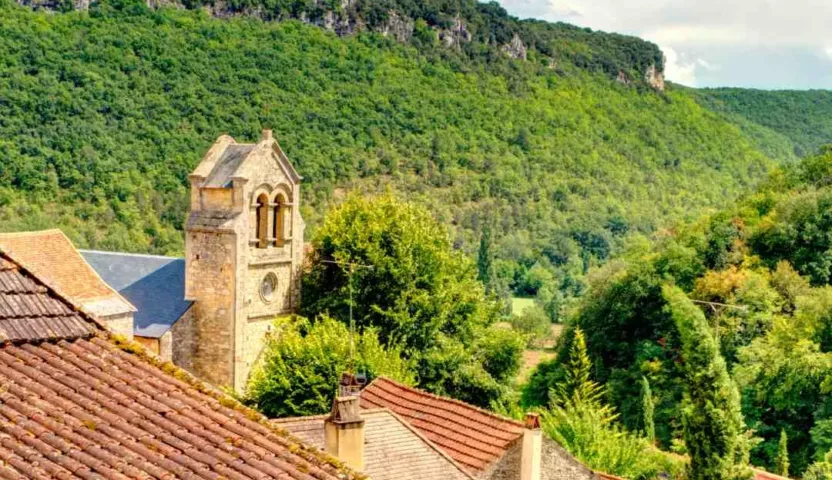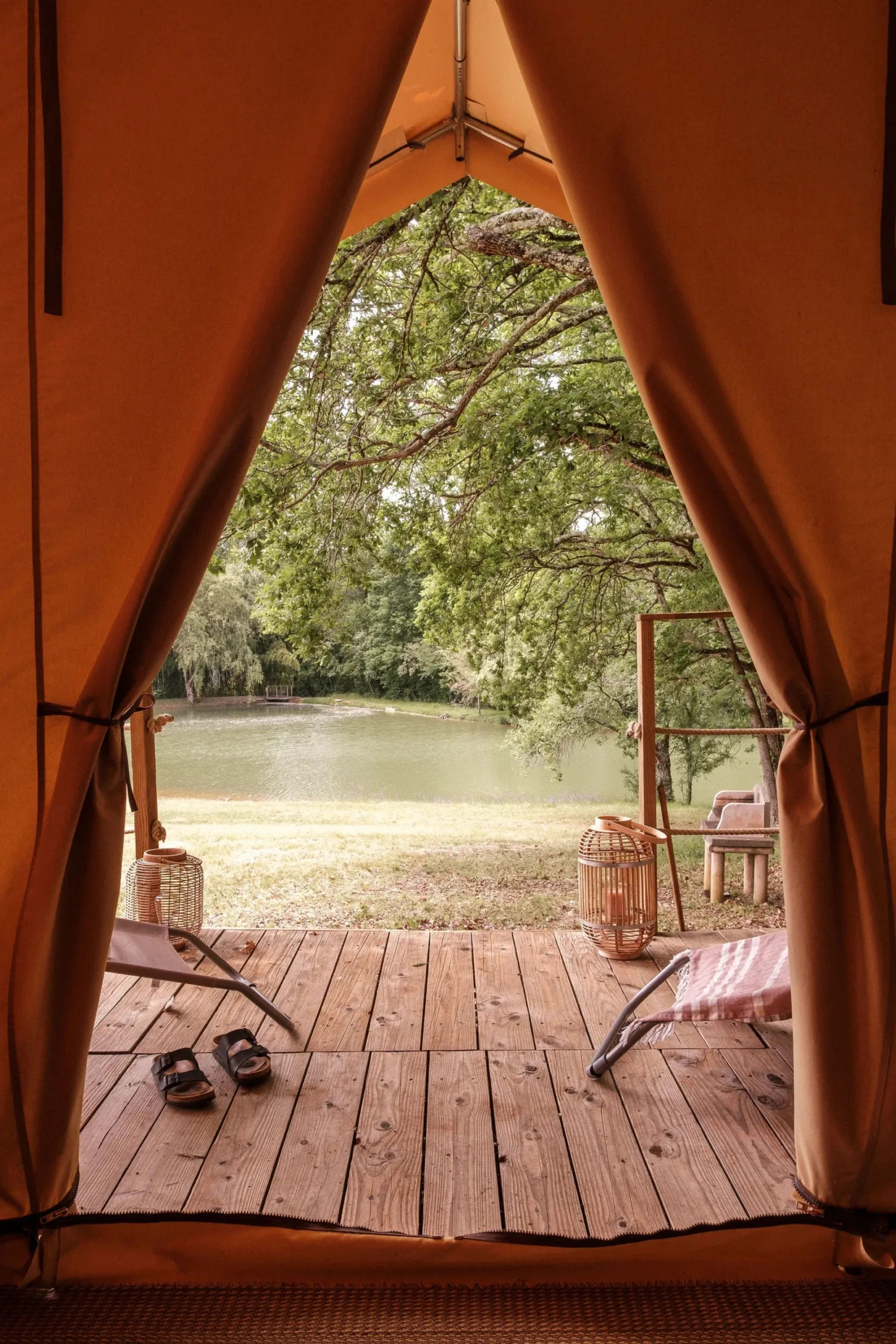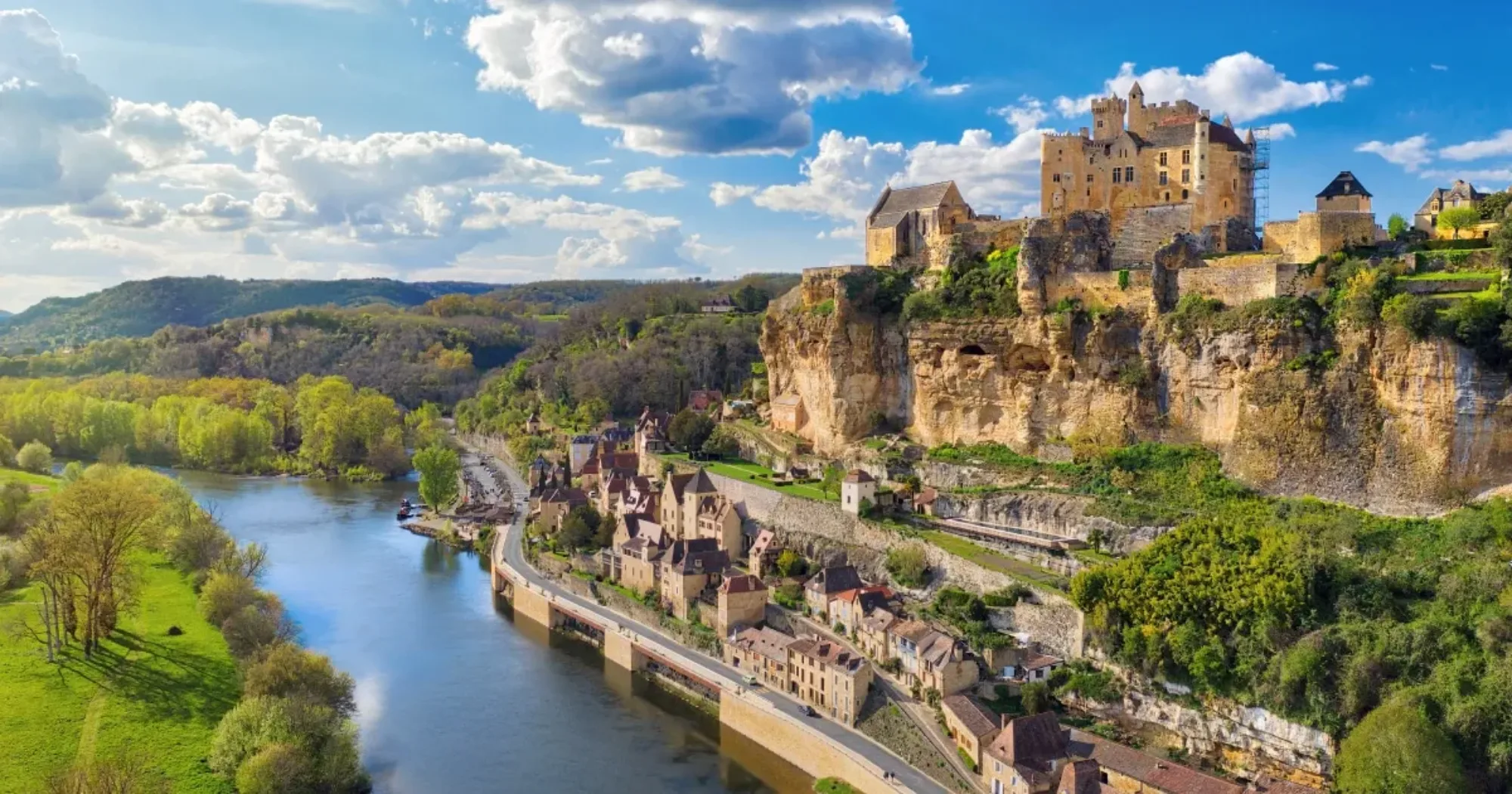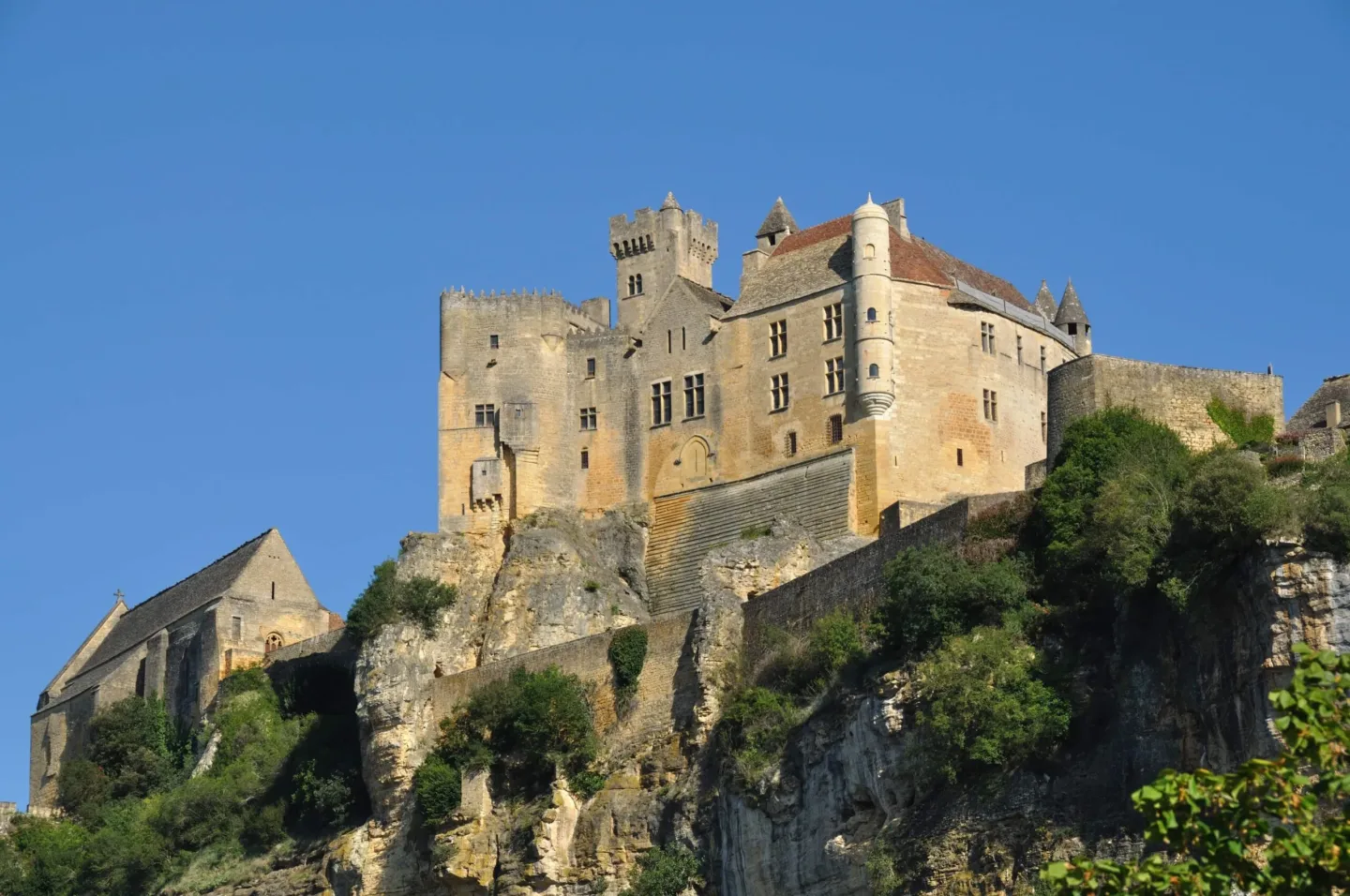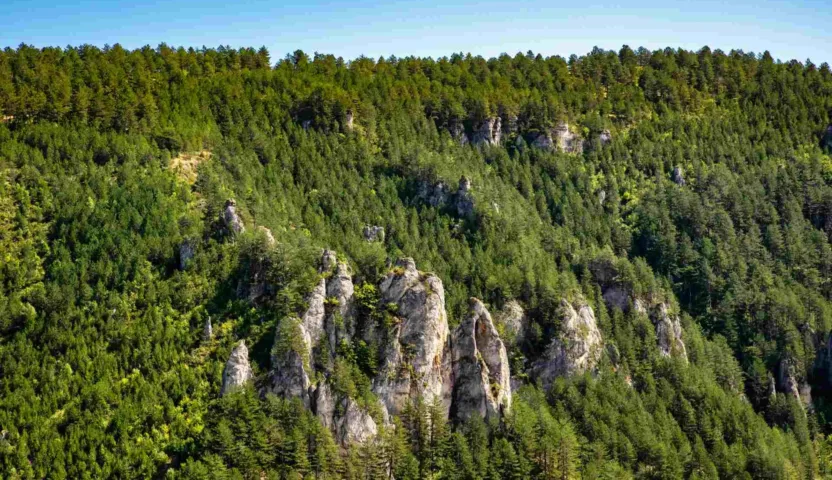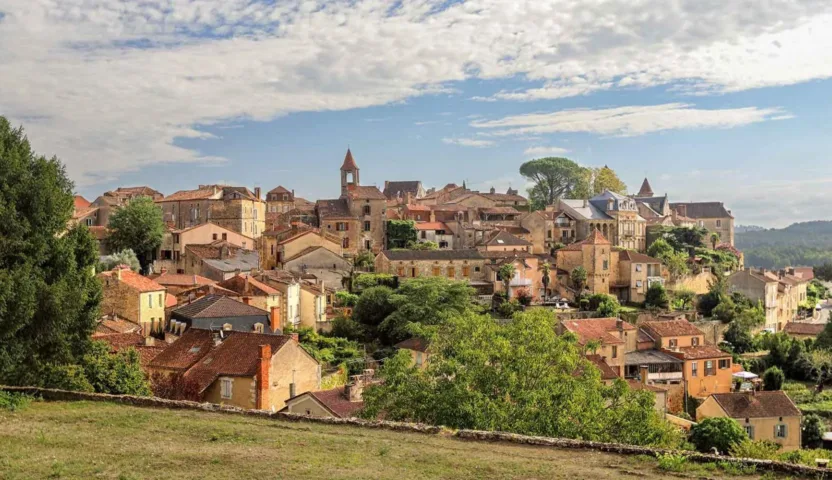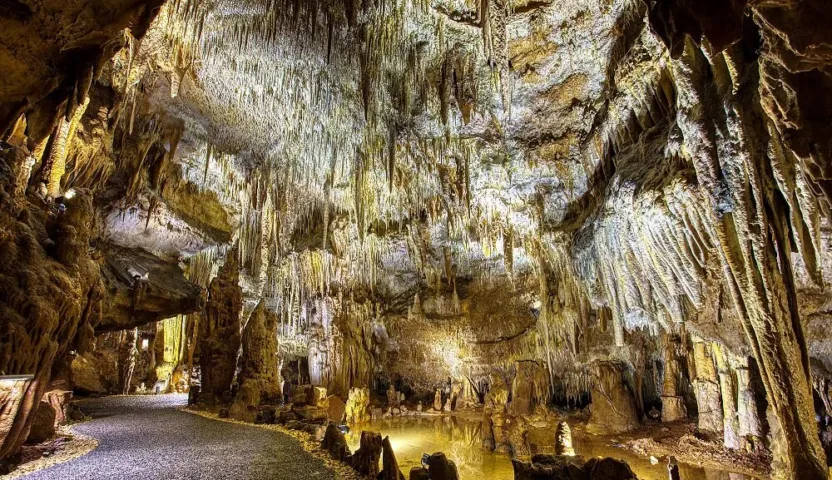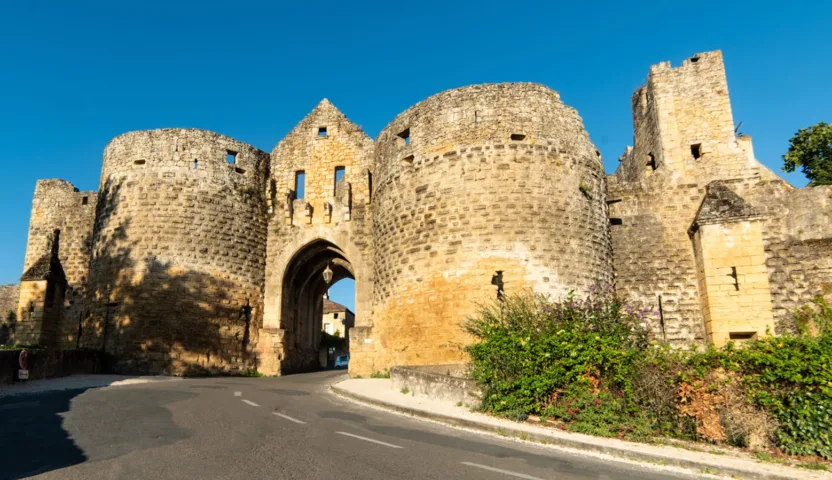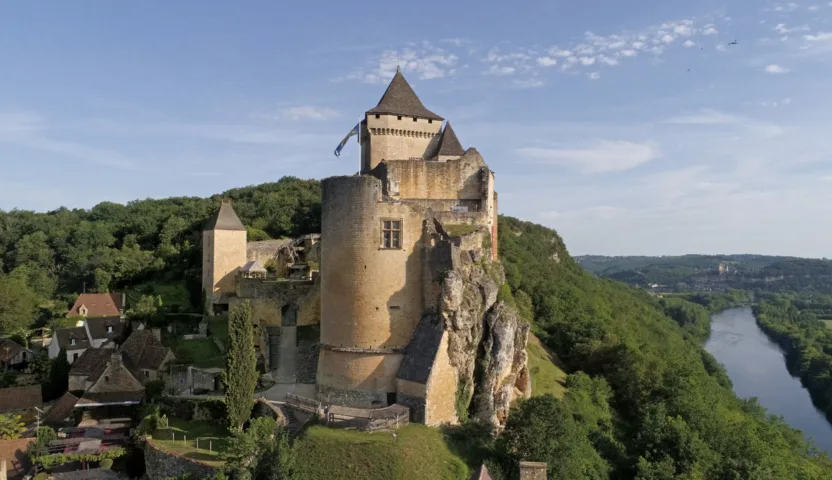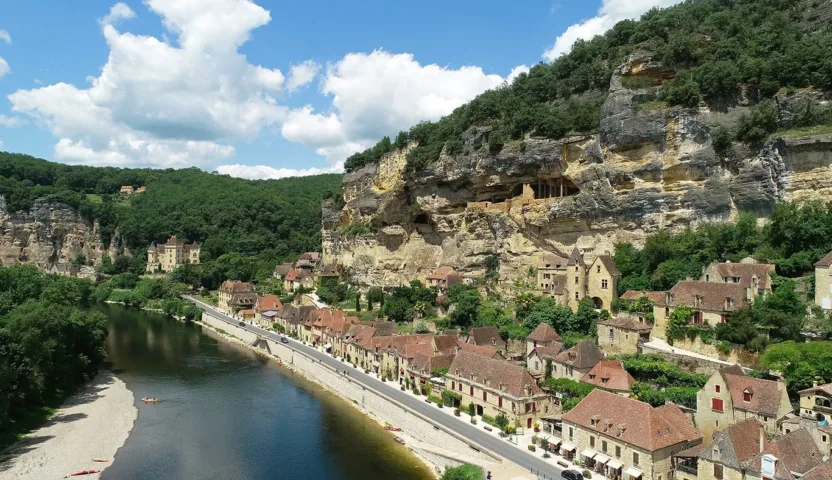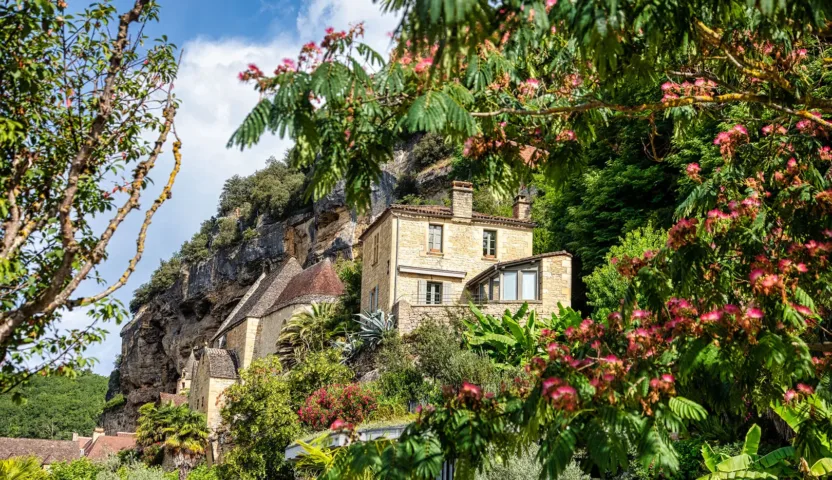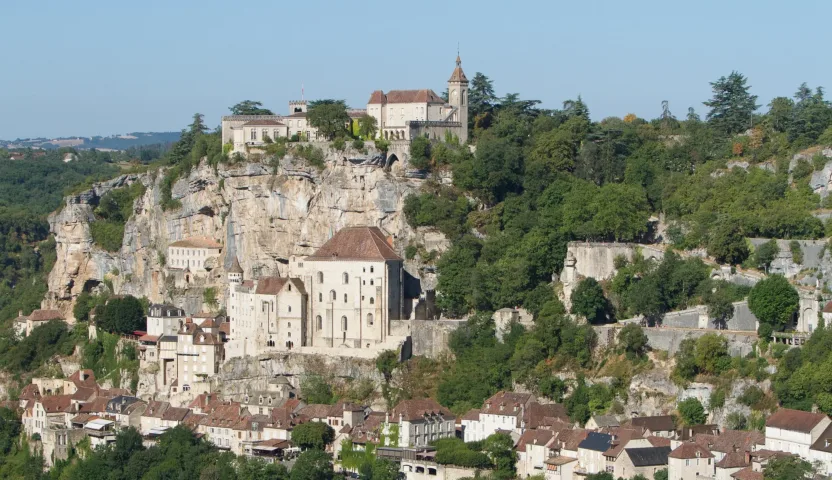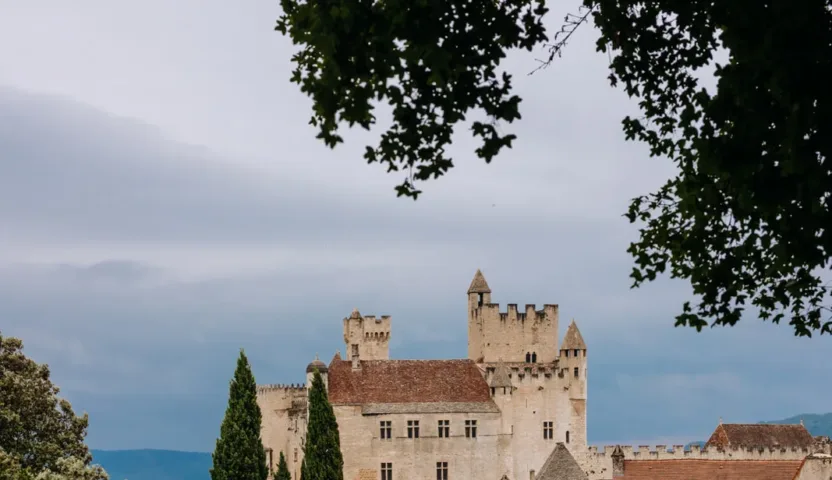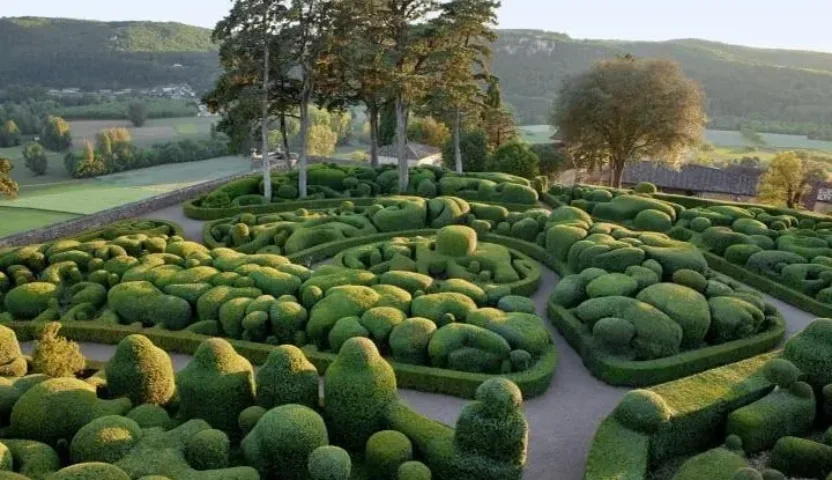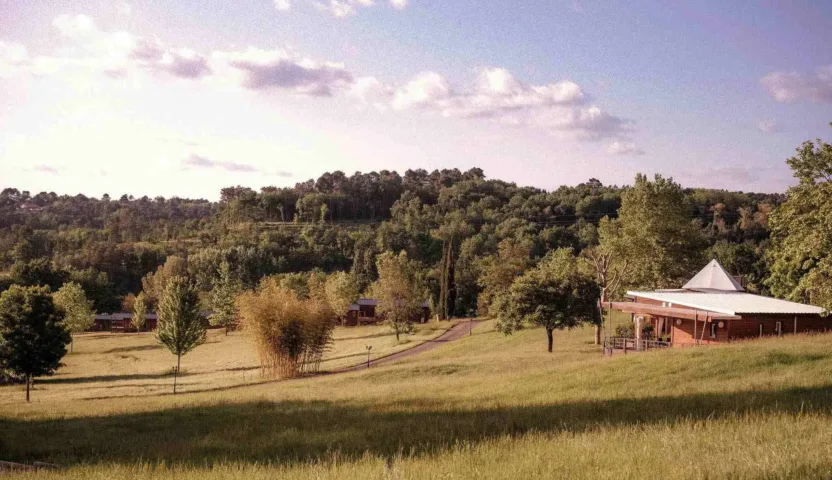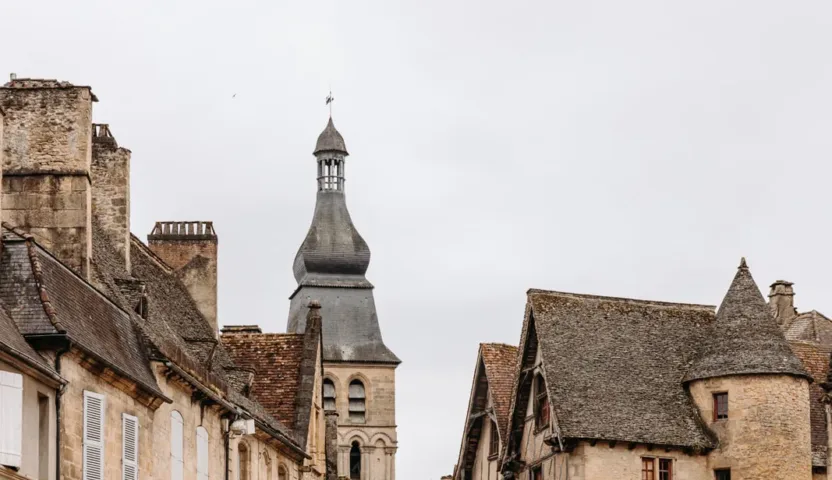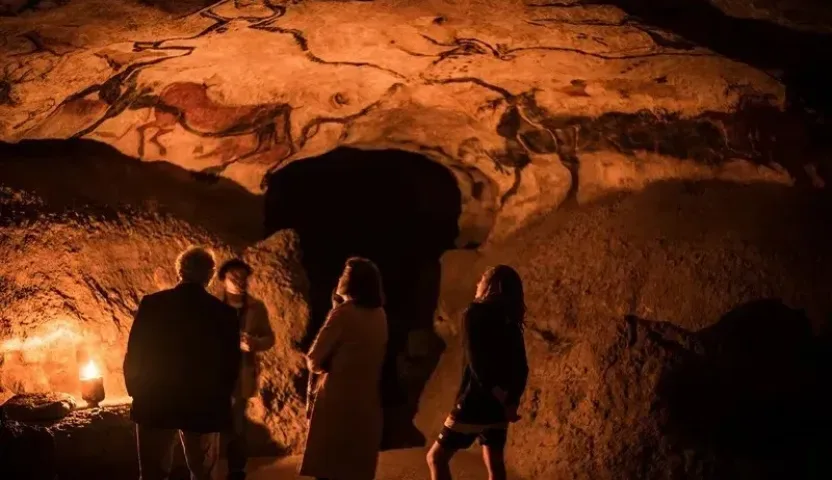In the heart of the Périgord Noir, less than 7km from our outdoor hotel in the Périgord Noir at Slow Village, discover the Château de Beynac, a listed historic monument in the commune of Beynac-et-Cazenac. Château de Beynac is one of the few well-preserved medieval castles in the Dordogne. Discover this castle, which seems to be at one with the limestone rock on which it rests, majestically contemplating the waters of the Dordogne, in which it is proudly reflected.
Thehistory of Château de Beynac
Château de Beynac was built by the Seigneur de Beynac in the 12th century on a rocky promontory above the Dordogne valley, to keep watch over the surrounding lands and valley. In 1194, Seigneur Ademar de Beynac died without a direct heir, and the castle fell to Richard the Lionheart, King of England, Duke of Normandy and Duke of Aquitaine through his mother, Eleanor of Aquitaine. He offered Beynac to one of his most loyal companions, the knight Mercadier, who was assassinated in Bordeaux in 1200, and the château returned to the hands of the Barons de Beynac. The respite was short-lived, however, as in 1214, Simon de Montfort, at war with the Cathars, seized the castle and took control of lands favorable to the Count of Toulouse, a defender of the Cathars. The Lords of Beynac then succeeded one another, consolidating their influence over the region.
During the Hundred Years' War, Beynac castle played an important role and became one of France's strongholds.
In the 15th century, Beynac became a barony that prospered and expanded, but in the 16th century, during the Wars of Religion, Beynac became a reformist and experienced poverty, and the peasants, known as "croquants", revolted. In the 17th century, calm returned and the Barony became a Marquisate, by the will of the King of France.
At the beginning of the 18th century, famine and misery led to an unprecedented uprising of the peasants, which was bloodily suppressed, and the split between the lords of Beynac and the village population began. After the childless death of the last heiress of the lords and barons of Beynac, Marie-Claude, in 1811, the Beynac line died out, 800 years after its birth.
Thearchitecture of Château de Beynac
Château de Beynac is an austere medieval structure perched atop a limestone plateau. It takes the form of an irregular quadrilateral extended to the south by a bastion spur. Its cylindrical towers and ramparts offer panoramic views over the Dordogne River. Standing 152 meters high, it is a formidable and feared fortress, capable of withstanding multiple wars and invasions. Château de Beynac can be seen from other fortresses in the area, notably from Château de Castelnaud.
Preserving the Château de Beynac
Château de Beynac has undergone numerous restorations over the centuries to maintain its architectural and historical integrity. In 1961, Beynac was acquired by Lucien Grosso, a private collector with a passion for history. He embarked on a monumental restoration plan that would not be completed until 2060. Although he is no longer alive, his successor was obliged to continue the work in order to preserve this historic jewel for future generations, making it possible for tourists and history buffs alike to visit the site.
In fact, its preservation today makes it a popular movie set.
